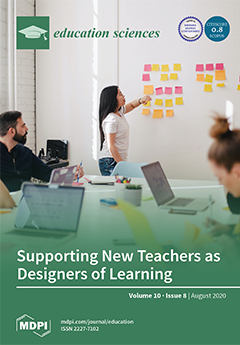Open AccessArticle
The Feasibility of Attention Training for Reducing Mind-Wandering and Digital Multitasking in High Schools
by
Alissa J. Mrazek, Michael D. Mrazek, Peter C. Carr, Alex M. Delegard, Margaret G. Ding, Daniel I. Garcia, Jenna E. Greenstein, Arianna C. Kirk, Erika E. Kodama, Miel J. Krauss, Alex P. Landry, Crystal A. Stokes, Kyla D. Wickens, Kyle Wong and Jonathan W. Schooler
Cited by 3 | Viewed by 5236
Abstract
During academic activities, adolescents must manage both the internal distraction of mind-wandering and the external distraction of digital media. Attention training has emerged as a promising strategy for minimizing these distractions, but scalable interventions that can deliver effective attention training in high schools
[...] Read more.
During academic activities, adolescents must manage both the internal distraction of mind-wandering and the external distraction of digital media. Attention training has emerged as a promising strategy for minimizing these distractions, but scalable interventions that can deliver effective attention training in high schools are still needed. The present investigation used a one-group pre-post design to examine the feasibility and outcomes of a digital attention training course at a public high school. The intervention was delivered with reasonably strong fidelity of implementation, with students completing 92% of the lessons and 79% of the daily exercises. At baseline, students reported mind-wandering more frequently during class than they multitasked, and mind-wandering was more negatively correlated with classroom focus. From pre-test to post-test (
n = 229), students reported improved emotional regulation and reduced mind-wandering during daily life. Among the 76% of students who felt they paid attention in class less than they should, classroom focus improved significantly. During class, these students reported significantly less mind-wandering but slightly greater digital multitasking. During homework, they reported significantly less digital multitasking but only marginally reduced mind-wandering. Collectively, these results suggest that online interventions could be a scalable way of providing attention training in high schools, but that future work must consider the role of both mind-wandering and digital multitasking.
Full article
►▼
Show Figures





